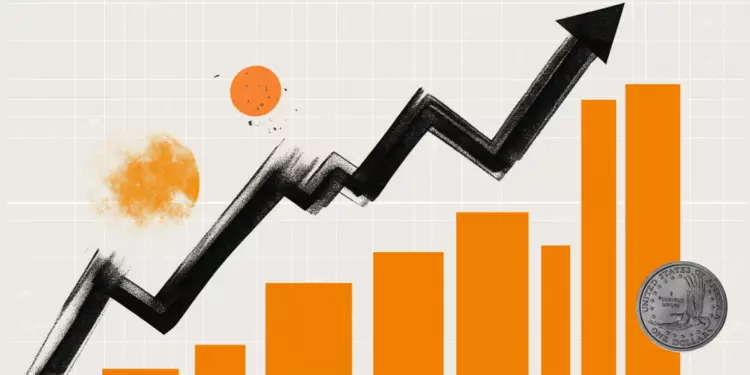As we navigate through the complexities of global economics, the US Dollar continues to maintain a robust position, trading above the 108.00 mark in the wake of looming tariff changes. Market participants are watching with bated breath as the weekend introduces new tariffs on Canada and Mexico, which are expected to create ripples of volatility in the financial markets. Currently, the US Dollar Index (DXY) hovers around 108.50, achieving a notable weekly high. In this precarious environment, the dollar’s stability suggests a blend of investor confidence and trepidation regarding future trade policies.
These tariffs, with Canada and Mexico facing a 25% levy and China a 10% tariff, are set to take effect imminently, underscoring the Trump administration’s hardline approach to international trade. Trump’s threats of imposing up to 100% tariffs on BRICS nations if they strive to contest the dollar’s dominance in global exchange depict a broader strategy of economic nationalism that could alter the landscape of international trade. These developments highlight the increasing friction between the US and other major economies, particularly as emerging markets consider the adoption of alternate currencies for trade.
In conjunction with tariff anticipation, recently released Personal Consumption Expenditures (PCE) inflation data has indicated continued price pressure within the US economy. The December report revealed a 0.2% increase in PCE prices month-over-month, with core PCE rising by 0.3%. This data is crucial, as it aligns with the Federal Reserve’s cautious approach to interest rate adjustments. Investors are braced for a steady policy stance, with an 80% probability forecasted that the Fed will hold rates steady in March. Such stability may be reassuring to the market in light of the global uncertainty surrounding trade tariffs and potential conflicts.
The Chicago Purchasing Managers Index (PMI) for January, although slightly below forecasts at 39.5, showcases improved sentiment from the previous month. This signals that while challenges persist, there are glimpses of recovery and resilience within the US economy. Personal income and spending also saw positive growth, suggesting that consumer spending remains unaffected by initial tariff anxieties. This consumer resilience provides a counterbalance to potential economic downturns triggered by international disputes.
The specter of trade wars looms large, reminiscent of the tumultuous US-China conflict that began in 2018 under President Trump’s leadership. The imposition of tariffs and subsequent retaliatory measures from China have set the stage for an economic conflict that has broad implications. Though the initial phases of the trade war showed some signs of resolution with the Phase One trade deal, the situation quickly became secondary to the COVID-19 pandemic. Despite the shift in focus, the Biden administration retained many tariffs, effectively maintaining pressure on China.
Looking ahead, the return of Trump as President raises questions about the trajectory of US-China relations and the broader implications for international trade. His promise to escalate tariffs to 60% across the board on Chinese goods reflects a commitment to prioritize US economic interests, often at the expense of global trade norms. This renewed confrontation could reignite tensions, creating a climate of uncertainty that influences not just market sentiment, but also the fundamental frameworks of global supply chains.
As the US Dollar fends off adverse effects from these geopolitical tensions, the interplay between tariffs and the dollar’s strength will be critical. Financial experts and economists alike are acutely aware that developments in trade practices can significantly impact inflation and consumer sentiment, feeding directly into the Consumer Price Index and shaping economic policies.
As we stand on the precipice of significant tariff implementation, the US Dollar’s resilience reveals both investor confidence and the complexities of impending global trade challenges. The market awaits clarity on how these tariffs will reshape economic interactions, especially with BRICS nations exploring alternatives to dollar dominance. In a world where trade barriers give rise to increased costs and economic strain, the vigilance of traders and policymakers will be paramount. As we anticipate potential shifts, it is clear that the outcomes of these economic policies will reverberate through various layers of the global economy for years to come. The potential for volatility remains, suggesting that the dollar’s stronghold may encounter new challenges, driven by an evolving international dynamic.

